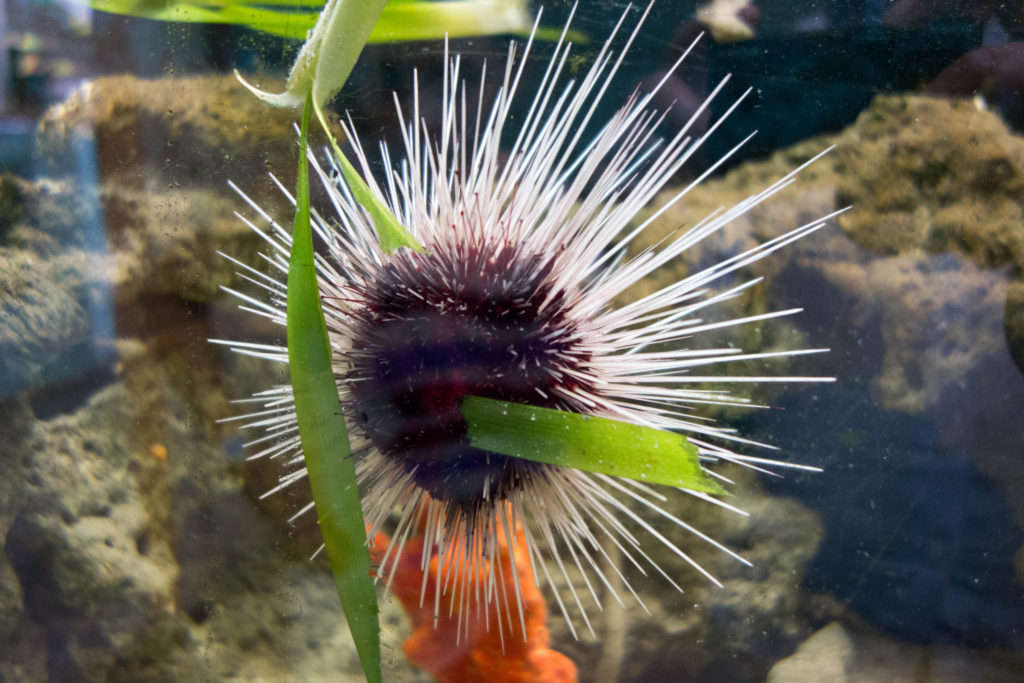Integrated Multitrophic Aquaculture (IMTA) may be the future of aquaculture. Compared to traditional farms that only grow one species, IMTA farms produce multiple edible products and provide increased sustainability. These integrated systems use the waste products from one species to grow another, and often the lowest trophic organism (usually algae/seaweed) then becomes feed for one of the other species. IMTA systems therefore create less waste and have reduced food costs than a system growing just one of the species would. All farms except those growing algae or nitrogen-fixing plants will generate waste that contains nitrogen which can lead to an enrichment in nitrogen in the water around the farm. When excess nitrogen enters the ocean from farms, it can stimulate a huge increase in algae, which then dies and depletes the oxygen in the water, stressing or killing other aquatic life.
The researchers in this experiment tested how successful an integrated system with seaweed (species Ulva), purple sea urchins, and sea bream could be in terms of reducing waste and producing food products. In this IMTA system, water was first pumped from the ocean into a header tank, which is a large tank that distributes water to the farm in a controlled fashion. From there, one-third of the output was sent through the sea urchin tanks and into the fish pond, while the other two-thirds was routed directly to the fish pond. Most of the fish pond water was directly discharged into the ocean, but a third of the water was first pumped into the seaweed tanks and then sent out to the ocean. The sea urchins were fed with only the seaweed grown in this system and the seaweed used the wastewater from the fish pond as its only source of nutrients.
This IMTA system was extremely successful for the 460 days they ran the experiment, but farmers who implement this setup may find productivity changes over time, and thus long-term test projects should be started and maintained. During the course of the experiment, the seaweed maintained a nutritious profile – high in protein and other important nutrients for the sea urchins. However, the growth rate of the seaweed slowed down significantly in the winter, when the water temperature was at its lowest. The seaweed tanks produced more than enough biomass to feed the sea urchins, meaning the system could generate additional income from selling excess seaweed at no cost to the farmer. The seaweed absorbed about 17% of the waste nitrogen produced by the sea urchins and fish, which significantly reduced the amount of nitrogen that would have been put back in the ocean by a farm growing only fish. The sea urchins grew faster than in most previous experiments and 80% of them had good or excellent quality roe, which is the part of the sea urchin that people buy to eat, when they reached marketable size. The sea bream grew at a relatively high rate with a good ratio of feed in to fish produced.
IMTA may be the future of sustainable aquatic food production but it still requires much more research. IMTA is a highly collaborative field with large scale projects and requires many types of scientists from engineers to biologists. This test system was set up in a warm water environment (water temperatures never fell below 18˚C), which allows for a much simpler system because the farmer doesn’t have to heat the water. Future farms could try to integrate heating by using a species that needs warm water first in the chain, then progressing to more cold-water species as the water flows through. Another challenge would be to design a recirculating IMTA system, where the filtering organism cleans the entire water supply that is pumped back to the first set of tanks instead of discharged into the ocean. While research into optimizing these IMTA systems is still ongoing, recirculating IMTA farms could provide a highly sustainable solution to the problem of feeding the large human population.


